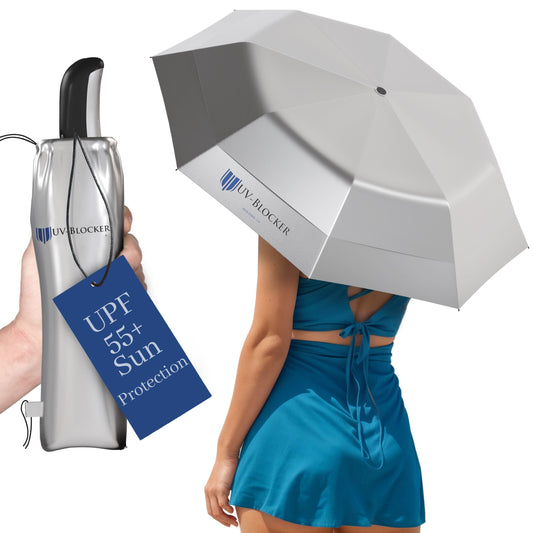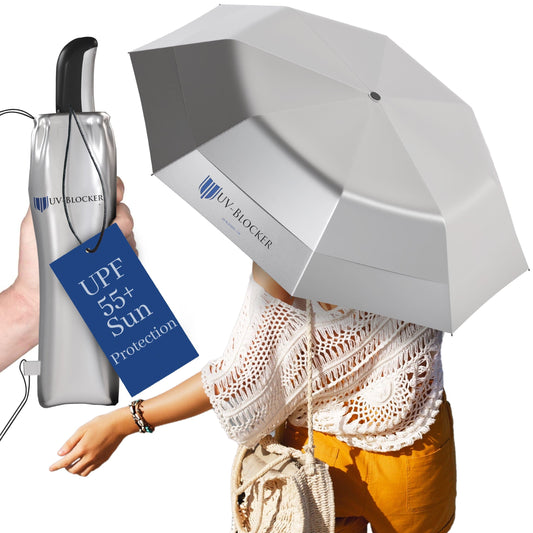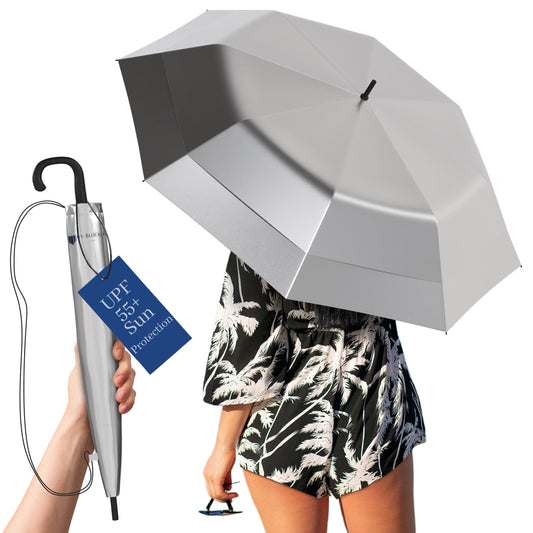
You know that feeling when you're standing on the pavement in July, and the heat radiating off the concrete feels just as intense as the sun beating down on your shoulders? That was me last summer, waiting for a bus in downtown Austin, holding a standard black drugstore umbrella.
I was technically "in the shade," but I felt like I was baking in a slow cooker.
That moment—sweating through my work shirt while thinking "this umbrella isn't working"—is what finally pushed me to dig into the actual physics of sun protection. As someone who's already dealt with a melanoma diagnosis, I couldn't afford to guess anymore. I needed to know why some umbrellas keep you cool while others just make you feel like a steamed vegetable, and which colors actually stop the UV rays that matter.
It turns out, the answer isn't as simple as "black vs. white."
The "Black Umbrella" Paradox
Here is the thing about black umbrellas that drives people crazy: they are scientifically excellent at blocking UV rays, but they can be miserable to stand under.
Physics tells us that dark colors absorb more UV radiation than light colors. A standard black canopy naturally soaks up about 90% to 95% of those harmful rays. The India Meteorological Department (IMD) even put out a recommendation specifically telling people to use black umbrellas because they create a better "heat sink" effect—absorbing the solar energy so it doesn't hit your skin.
But where does that energy go? It turns into heat. Right there in the fabric.
So yes, you are protected from the burn, but you are also carrying a portable radiator above your head. That 5-10°F temperature spike you feel under a cheap black umbrella? That's the fabric radiating absorbed heat back down onto you.
Why White Umbrellas Are Tricky
So I tried a white umbrella next. It reflected the visible light beautifully. I definitely looked more "resort ready," and the fabric didn't turn into a stovetop.
But here is the catch that scared me: white fabric, without specialized coatings, lets a scary amount of UV radiation pass right through. We're talking about 40% to 50% more transmission than black cloth. You stay cooler, but you might still be getting a sunburn.
It felt like a lose-lose choice. Choose black and cook, or choose white and burn.
The Silver Lining (Literally)
Then I discovered the duality of silver. Functional? Absolutely. Silver-coated umbrellas are like personal mirrors; they bounce both the UV rays and the heat away before they even touch the fabric.
I measured the temperature difference myself once—it was profound. Standing under a silver umbrella felt about 15 degrees cooler than the direct sun.
The problem? I couldn't bring myself to carry one to a business lunch. They look industrial. Walking down the street looking like a satellite dish wasn't exactly the vibe I was going for.
The Solution I Finally Settled On
After testing nearly a dozen options, I realized the "black vs. white" debate is outdated. The actual solution is what engineers call dual-layer construction.
This is what I carry now, and I recommend it to everyone who asks: an umbrella that is silver (or specially coated) on the outside to reflect the heat, but black on the inside to absorb any stray UV rays that bounce up from the pavement.
It’s the cheat code. You get the cooling of the white/silver reflection and the UV-absorption safety of the black interior. Plus, looking up at a dark canopy is just easier on the eyes than squinting against a bright white underside.

But What About That Study?
You might have seen a headline from a few years back—it was a 2017 JAMA Dermatology study—crying out that "umbrellas don't work!"
I read the actual study. It found that 78% of people using only a beach umbrella got sunburned, compared to 25% using sunscreen.
But here is the detail the headlines missed: they tested standard beach umbrellas. Not high-performance UV gear. If you use a thin piece of canvas, of course you're going to get burned.
This is why I don't trust any umbrella that doesn't have a UPF 50+ rating printed directly on the label. If the manufacturer hasn't tested it, I'm not trusting my skin to it.
My Personal Checklist
If you are shopping for an umbrella right now, ignore the color for a second and check these three things first:
1. The UPF 50+ Tag. This is non-negotiable. It's the difference between a "sun shade" and safety equipment.
2. The Light Test. Hold the umbrella up to a light bulb. If you can see pinpricks of light coming through the weave, put it back. UV rays are smaller than visible light—if you can see the bulb, the radiation is definitely getting through.

3. Size Matters. On the beach, sand acts like a mirror, reflecting about 25% of UV rays back up at you. A tiny umbrella won't cut it. I use a 7-foot canopy at the beach to make sure my feet aren't sticking out into the "burn zone."
The Bottom Line
If I had to rank them based on my own experience:
First Place: Dual-Layer (Silver/Color exterior, Black interior). It's the only one that keeps me cool and safe without compromise.
Second Place: Black (with UPF 50+ rating). You might get a little warm, but you won't get burned.
Third Place: White (ONLY if it has a certified UPF 50+ coating). If you love the look, just double-check that label.
Don't overthink the fashion aspect. Your skin doesn't care if the umbrella matches your outfit—it cares if it blocks the radiation. Grab a dual-layer one, slap on some sunscreen for the reflected rays, and enjoy the summer without the stress.
Verified UPF 55+ protection endorsed by the Melanoma International Foundation. Browse the UV protection umbrella collection.








